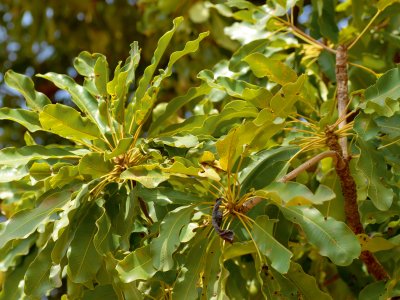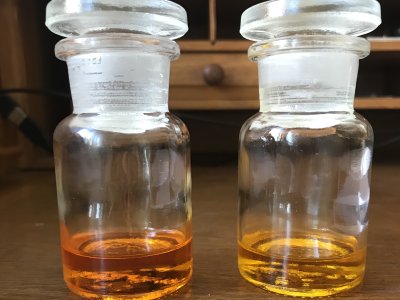Clinical Aromatherapy in Nursing

Clinical Aromatherapy in Nursing
by Jane Buckle (Arnold 1997).
Reviewed by Maria Lis-Balchin B.Sc. (Hons), PhD.
This book should not be recommended for any University courses in complementary or alternative therapies as I do not feel it meets the academic standards expected of a course core book or recommended reading book at any level. Due to the ever-increasing number of Universities offering Diploma/ degree courses in Complementary therapies it is essential to maintain a strong scientific credibility especially for nurses and health professionals with their high academic expectations.
There are some good points to this book, but it is spoilt by misunderstandings and misinterpretations of the literature and a general lack of knowledge of chemistry and microbiology together with many large and small errors, omissions and a multitude of bad spelling.
There are indecision's as to what clinical aromatherapy encompasses i.e. should it include any internal or medicinal essential oil usage? No, states the author and gives supporting statements from the Medicines Control Agency (a UK organization), but later she advocates the use of vaginal tampons soaked in essential oils to treat thrush! Surely this is classed as medicinal application rather than the healing touch?
The History of Aromatherapy was really a history of medicines, mainly herbs, but included the very odoriferous mercury! Confusion reigns throughout this book between essential oils and herbal medicines and the author includes virtually unknown herbal oils for aromatherapy e.g. Centella (used to treat leprosy!).
Of the hundreds of essential oils to chose from, only a few are mentioned ad nauseum e.g. lavender, frankincense, marjoram, Eucalyptus globulus, E. citriodora, petitgrain, Roman chamomile, geranium, rose (real?), neroli (real?). Can nurses afford such luxuries as real rose and neroli? Many of the CTs or chemotypes are generally unavailable and unlike the common essential oils, have not been tested for both oral and dermal toxicity. Health and Safety problems arise due to omission of the volume of the diluent carrier oil whilst the number of drops of essential oils are clearly stated.
The chapter on Extraction of essential oils, including Gas chromatography and the chemistry of essential oils is inadequate and shows that the author does not appear to be familiar with any of the techniques e.g. enfleurage, expression and CO2 extraction, the latter being solvent extraction, which does not yield an essential oil as stated by the author.
Non-academic references abound from various Aromatherapy books and non-peer-reviewed journals which include papers given at Aromatherapy Conferences. Second-hand references, quoted (or often misquoted) in non-scientific aromatherapy books are numerous. The author also misunderstands quotes e.g. she states that "Melissa oil is antiviral". It is not. The paper she actually quotes in two paragraphs (p.130) states that tannins are the active components. These are in the water-soluble fraction and do not occur in the volatile essential oils. This is repeated on several pages e.g. p.204, 216, 217. Tannins were also responsible for the antiviral activity of Eucalyptus globulus, and again aqueous extracts of 75 plants had viral activities, not the essential oils (p. 130).
In dealing with general hospital care, a large number of unsubstantiated statements are made e.g. "borneol and myrcene were antagonists to acetylcholine" therefore are included in the pain relief section as well as p-cymene for some unknown reason; Diabetes can be apparently treated with a number of essential oils, with no academic references in support; "anticarcinogenic essential oils" are misrepresented as the references quoted refer to animal experiments where cancer was induced chemically and could be partially suppressed by giving an essential oil prior to the chemical treatment, which is a far cry from curing cancer.
The extraordinarily long section on microbiology includes errors in the practical methodology and a slight misconception of essential oil activity against bacteria. The fact that some essential oils had an effect on "MRSA" at one London Hospital does not imply essential oils can kill off any MRSA all over the world. In fact I myself had a study done with a London Hospital and only a few essential oils were found to be effective against some of the resistant strains. There is also the problem of variability in different batches of essential oils and I have published a number of papers showing the effect on antibacterial activity.
It is very unfortunate that there was so little information given on the effect of essential oils on stress, their benefits on mood, their influence on behaviour, their influence on cerebral blood flow, their effect on motility of animals and response times of humans etc., facts which are well documented in the scientific literature. This effect on the psyche through inhalation is probably the most probable mode of effecting a response in man, which together with counselling and massage form the basis of aromatherapy treatment and do not need to involve the effect of absorbed essential oil components and their, as yet, unproven effects on specific organs.
Good points include the introduction to the actual hospital/ nursing regulations and health and safety regulations governing the use of essential oils, the possible usage of aromatherapy in specific hospital care situations (with some reservations as above), nursing diagnosis etc.
There are some very useful facts given on p.41 e.g. that palms of the hands are most permeable to essential oils: this implies that the aromatherapist gets most of the benefits of a massage with essential oils! Never mind the patient!
Maria Lis-Balchin B.Sc. (Hons), PhD. Was a Senior lecturer at South Bank University, London and an international expert and speaker on essential oils, their chemical composition, adulteration and their microbiological, insecticidal and pharmacological effects. She has over 50 scientific publications and a book entitled "Aromascience: The chemistry and bioactivity of essential oils". She has instigated a BSc./ MSc. unit entitled "The Science of Essential oils and Aromatherapy" which has been running at South Bank University for many years. It was also incorporated into the Diploma in Higher Education (Complementary Studies), ENB A49, offered by the University for health professionals, which could lead to the BSc. (Hons) in Professional Nursing/Midwifery Practice.
..............................................
Clinical Aromatherapy In Nursing.
Reviewed by Martin Watt
This book contains numerous research references. However, many have not been adequately evaluated to ascertain if they are relevant to aromatherapy or not. My impression is that the author was ill equipped to sort the aromatherapy wheat from the chaff, a task vital for a book targeted at the medical profession. I find it alarming that this book will be promoted to the medical profession as a definitive work, when it contains so much ill evaluated material.
Many references are to previous aromatherapy books, which are themselves packed with gross errors and hype. This is particularly noticeable in the technical sections and in the section on fixed and infused oils. Many of the references when examined, are found to be theoretical ideas presented by previous authors, rather than sound verifiable facts. I find this particularly irksome when scientific information is being presented (such as in the section on interactions with drugs) and made to look like it is sound information, when it is no such thing. Many of the references quoted bear absolutely no relation to the use of essential oils in aromatherapy.
Pages 61-62 contain the usual childishly simplistic aromatherapy nonsense on the chemistry of essential oils. These generalisations are an inaccurate simplification of the activity of essential oils and can be hazardous if followed to the letter.
Many of the claimed properties of the infused oils, are derived from the herbal use of the water soluble parts of the plant when consumed as traditional medication.
Definitions of skin irritation are incorrect and sensitivity is an incorrect term. Some of her ideas on chemical solvents being responsible for the reactions are not proven, whereas certain of the extracts she talks about are well-proven as sensitising agents.
The section on antiviral properties contains numerous references. However, the fact that most of this research was not conducted on essential oils, but rather on water based extracts, is ignored. This makes this section extremely misleading. In reality, few essential oils have proven antiviral actions inside the body.
The section on the treatment of wounds contains some hazardous information. Unless the infused oils mentioned contain an effective preservative system, then they are likely to contain viable fungal spores and bacteria. Likewise floral waters, unless they contain an adequate preservative system are highly likely to be contaminated with bacteria and fungi. Just what the body does not want when trying to heal itself. Traditionally aqueous infusions were used to treat wounds and were effective. However, that is only when they are freshly prepared. Hydrosols and infused oils are purchased from numerous sources and how long they have been in transit or storage is rarely notified. Nurses, do you really want to risk being accused of professional misconduct by using products that have not been bacteriologicaly tested?
See also the article on hydrosols on this site.
Source and copyright: http://www.aromamedical.org


